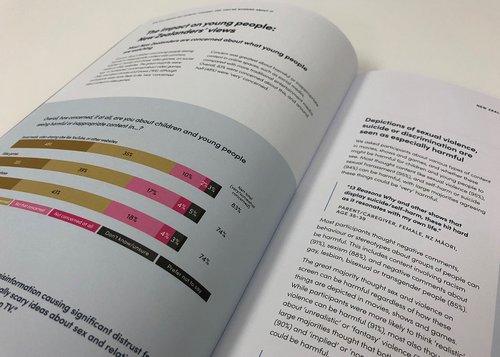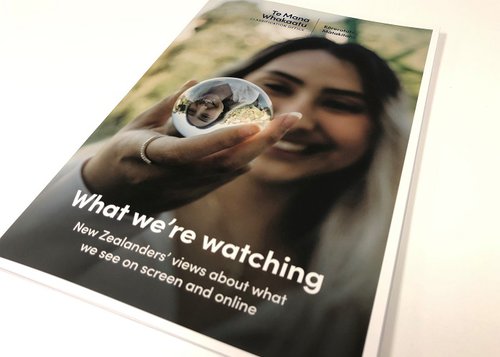New Zealanders watch out for warnings
New Zealanders want to be warned about a broader range of harmful content seen in movies, shows and video games, according to new research released by Te Mana Whakaatu – Classification Office today.
Chief Censor Caroline Flora said the national survey, which asked New Zealanders about their attitudes towards classification, highlighted the public’s desire for more information about the challenging topics that are appearing on our screens.
“The message we keep hearing is that people are finding it difficult to safeguard children against harmful onscreen content, especially online”, said Ms Flora.
“Trust in websites to provide safety features and remove harmful material is low, and many individuals admit they lack sufficient knowledge to protect their whānau.
“In contrast, Aotearoa viewing audiences know and trust the classification information provided by the Office. Age ratings and content warnings make viewing decisions easier, especially for those who are choosing something for their tamariki or rangatahi to watch.
“Content warnings describe the most difficult or concerning parts of a film, show or video game. They're our most practical short-hand way of giving consumer advice about the tough stuff viewers can expect when watching something.
“We currently warn for a range of content – such as graphic violence, offensive language, drug use and sex scenes.
“The survey revealed that a majority of respondents would find it helpful if warnings were included on publications depicting a wider range of harmful content, such as sexual harassment, unwanted sexual behaviour and racist stereotypes.
“This reflects evolving social views about what behaviours are appropriate, and which attitudes are outdated and detrimental.
“We strive to provide audiences with detailed warnings and will take this feedback on board. Summaries of our ratings information are readily available through the Find a Rating search function on our website.”
Key findings from What We’re Watching – 2023 Snapshot
Knowledge of age ratings
- 75% correctly identified that the ‘M’ symbol means a movie is more suitable for mature audiences.
- 63% correctly identified that ‘Restricted Rating’ symbols mean a movie is not suitable for younger audiences.
- 58% correctly identified that the ‘PG’ symbol means a movie is generally suitable but younger children may need parental guidance.
Importance of classification info
- 61% believe that age ratings are about right, 20% believe they are too lenient, 10% believe they are too strict.
- Among those who helped choose content for a child or young person, 79% said that content warnings are important and 74% said that age ratings are important.
Support for additional content warnings
- 68% said it would be helpful to include warnings for sexual harassment or unwanted sexual behaviour (74% among those who helped choose content for a child or young person).
- 59% said it would be helpful to include warnings for racist behaviour or stereotypes (64% among those who helped choose content for a child or young person).
For video games specifically:
- 58% said it would be helpful to be warned about in-game purchases (67% among those who helped choose content for a child or young person).
- 57% said it would be helpful to be warned about simulated gambling (62% among those who helped choose content for a child or young person).
Online safety and harmful content
- 65% agreed that it’s hard to protect children from inappropriate or harmful online content.
- 56% said they felt they knew enough to help the whānau stay safe.
- 41% find it hard to avoid seeing harmful or offensive content online.
- 34% agreed that websites and social media sites provide the tools and features needed to stay safe online.
- 52% do not trust social media sites to remove dangerous, violent or harmful material.
Contact
Maggie Tait, Communications Manager
Email: media@classificationoffice.govt.nz
Further information
- A summary of the survey findings can be found here.
- More information about age ratings and content warnings can be found here.
- Classification details for publications can be found using our Find a Rating search.
- Previous What We’re Watching research reports can be found here and here.
Subscribe to our news
Stay up to date with news from the Classification Office.


